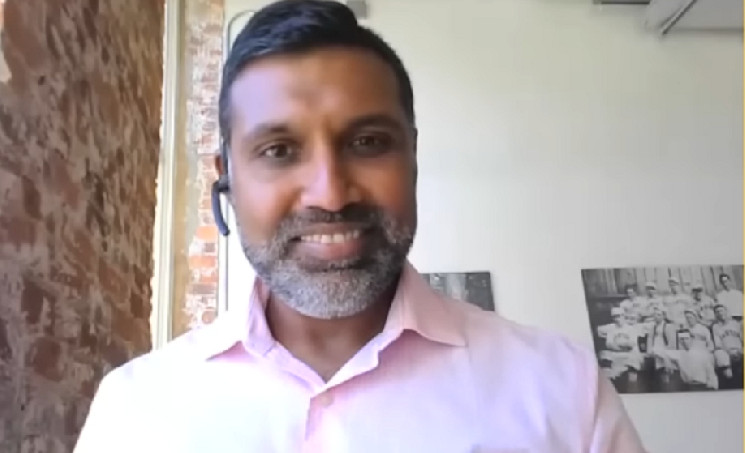MoneyGram Head of Fintech Strategy: Bad News Can’t Stop the Blockchain

Blockchain
As the world rapidly embraces digital transformation, blockchain technology and cryptocurrencies are gaining significant traction in the realm of global remittance, according to Luther Maday, Head of Fintech Strategy and Innovation at MoneyGram.
However, the journey to mainstream adoption is challenged by one critical aspect: real-world applicability.
MoneyGram has been closely monitoring the cryptocurrency space and acknowledges the increasing number of entities utilizing these innovative technologies for cross-border transactions.
While these enterprises are not yet directly linked to major players, Maday emphasizes the importance of achieving the “last mile” for mass adoption.
This “last mile” refers to the ability of individuals to seamlessly transfer cryptocurrencies and utilize them for everyday purchases, such as a loaf of bread.
Maday, who boasts over 15 years of experience in Fintech, Financial Services, and blockchain, shared with Cryptonews.com the significance of differentiating between blockchain and cryptocurrencies.
As for MoneyGram, the focus remains on the boundless potential of blockchain technology to revolutionize the payment landscape.
First and foremost, blockchain excels in two key areas: speed and settlement.
In today’s global financial landscape, bank accounts are pre-funded across borders to facilitate money movement.
While consumers perceive these transactions to occur instantaneously, the actual settlement takes several days.
With blockchain, settlements are executed instantly.
The second remarkable feature of blockchain is the inherent transparency it offers.
The technology provides a mechanism for tracing and tracking transactions, identifying both senders and receivers.
According to Maday, it is this traceability that holds tremendous promise for the future of financial transactions.
How fast should we drive?
The Cryptoverse has seen several major events in 2022 and moving into 2023: market crashes, a series of companies failing, regulatory scrutiny, and legal issues – to name just a few.
Addressing the potential impact of negative news cycles on cryptocurrency remittances and adoption, Maday acknowledged that they likely have “some effect.”
However, he also emphasized that positive outcomes could emerge from these challenges. From MoneyGram’s perspective, the current events are seen as potentially advantageous.
Maday firmly believes that “blockchain is here to stay,” and regulation will inevitably follow, though its exact form remains uncertain.
He stressed the importance of regulation and protection in the crypto space.
While not elaborating on MoneyGram’s specific expectations for regulatory direction, Maday commented on the company’s interaction with regulators, noting that regulations are likely being drafted in response to current market conditions.
To illustrate the necessity for regulators, Maday shared a common analogy: “What allows a car to go fast? Most people say it’s the engine, the gas, the accelerator. However, it’s the brakes on the car. Otherwise, we’d all be driving 5MPH.”
Acknowledging the learning curve for all parties involved, Maday added,
“It’s a new tech – we’re all learning, legislators too, they’re just humans.”
Blockchain Easily Going Where Few Have Gone Before
On the global level, the world has been hit by the COVID-19 pandemic, followed by the Russian invasion of Ukraine, as well as the massive earthquakes in Turkey and Syria.
This too may have affected crypto adoption for remittance.
Per Maday, the way aid is being delivered to Ukrainian refugees, as well as the earthquake victims, with USD coin (USDC) stablecoin, is particularly noteworthy.
“We’re noticing that the usage of USDC as an instrument for aid relief is coming out to be somewhat easier and faster to deliver.”
Notably, it is not so much that the war in Ukraine is helping this adoption, but that it is hard to deliver aid to certain areas in general, he argued.
That’s why, in the contemporary world, the combination of digital assets and MoneyGram makes it easy to send aid where it would previously have been very difficult to do so.
What is MoneyGram currently working on when it comes to the crypto space?
From a remittance perspective, the trend MoneyGram is trying to follow is use cases around stablecoins and central bank digital currencies (CBDCs), Maday said.
It’s too early to see “who’ll come out on top” between the two, but the company will stay close to USDC and its partners – USDC issuer Circle and the Stellar network.
As of June last year, MoneyGram launched a partnership with Stellar, enabling anyone with a Stellar wallet to go crypto-cash-crypto.
“It services a huge part of the global population that’s unbanked or underbanked,” Maday said.
Any on-off ramp that requires a bank account doesn’t address the population that operates in cash.
“Our project allows these people to tap into the industry,” he added.
For US customers, in November last year, MoneyGram launched a new service enabling these users to buy, sell, and hold Bitcoin (BTC), Ethereum (ETH), and Litecoin (LTC) via its mobile app.
“Consumer reaction has been pretty positive,” said Maday, without sharing specific numbers.
MoneyGram has witnessed a “great adoption” of USDC in Latin America, where it serves as a hedge against inflation.
Despite geographical differences, Maday contends that the technology itself knows no boundaries.
“The tech has no limitations. The tech doesn’t know borders.”
Although, when it comes to adoption, MoneyGram’s experience has revealed a correlation between countries with high inflation rates and their interest in alternative assets like USDC.
This insight has been one of the most significant lessons learned by the company in its ongoing exploration of the blockchain and cryptocurrency landscape.





